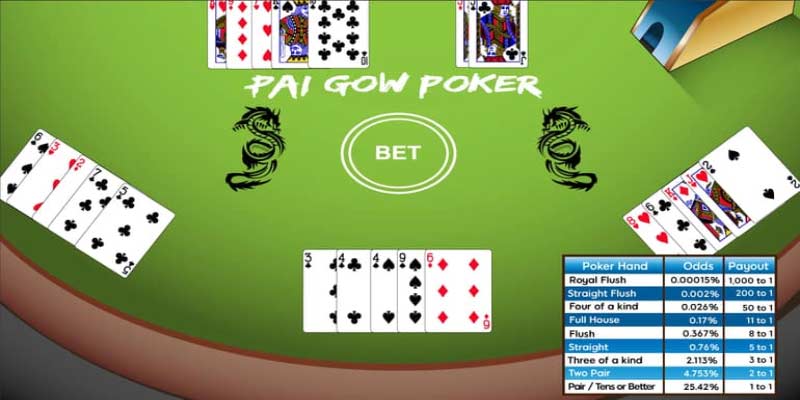The Pai Gow Game blends strategy, skill, and luck, making it a timeless favorite from ancient China to today’s casinos. Its unique format continues to draw players of all skill levels. Visit my site: kubet to explore more about this captivating game.
Introduction to Pai Gow Game
Understanding the Pai Gow Game requires not just knowledge of its rules and mechanics but also an appreciation for its rich and vibrant history. This ancient game stems from a desire for social interaction, entertainment, and competition, making it a staple in both traditional and contemporary gambling environments.
At its core, the Pai Gow Game involves strategic card play, where players aim to create two winning hands from a set of seven cards. Mastering the intricacies of this game can provide a significant advantage and enhance the overall gaming experience.
In the following sections, we will explore the origins and evolution of the Pai Gow Game, how to play it effectively, and the different strategies that can lead to success at the tables.
History of Pai Gow Game
The Pai Gow Game boasts a storied past, steeped in tradition and culture. Its history is not only interesting but also provides valuable context for understanding its current popularity in casinos worldwide.
Origins in Ancient China
The roots of Pai Gow trace back to the Song Dynasty (960–1279 AD) in China. It was initially a domino game, which evolved over centuries into the card game known today. The game was played as a means of socializing among friends and family, allowing for bonding and entertainment.
Throughout its early years, Pai Gow gained immense popularity within Chinese communities, eventually leading to its expansion beyond the borders of China. The game’s combination of strategy and luck made it appealing, attracting players of various backgrounds.
Introduction to Western Gambling Culture
By the 19th century, Pai Gow had made its way to the Western world, particularly to the United States, due to the influx of Chinese immigrants. The adaptation of the game included modifications to fit Western tastes, such as using playing cards instead of traditional tiles.
The Pai Gow Game became increasingly popular in American casinos during the late 20th century, further solidifying its status as a classic casino game. Today, it is a staple in many gaming establishments, available in various formats, including poker and online versions.
Cultural Significance
Beyond its role as a gambling game, Pai Gow holds cultural significance within Chinese traditions. The game reflects values such as respect, patience, and social harmony. These elements contribute to the game’s appeal, as players often engage in spirited discussions while enjoying the gameplay.
As the Pai Gow Game continues to flourish globally, it retains its connection to its rich heritage while adapting to the preferences of modern players.
How to Play Pai Gow Game
Mastering the Pai Gow Game starts with understanding its structure and rules. Though it may seem complex at first, consistent practice makes it easier. Read more: Ku casino for a deeper dive into strategies and gameplay insights.
Understanding the Setup
A standard game of Pai Gow is played with a deck of 52 playing cards along with one joker. Each player receives seven cards, which they must arrange into two distinct hands: a high hand and a low hand. The objective is to create two hands that beat the dealer’s hands.
Before starting, players must place their bets, and after the cards are dealt, the real fun begins. The dealer will have their own set of cards, and comparisons will be made once all players have set their hands.
Arranging Your Hands
One of the critical components of the Pai Gow Game is arranging your cards correctly. The high hand consists of five cards, while the low hand contains two. The general rule is that the high hand must always be stronger than the low hand.
Here are some essential tips for arranging your hands:
- High Card Combinations: Try to create strong combinations, such as pairs, straights, flushes, or full houses. These will give you a better chance of winning against the dealer.
- Using the Joker: The joker can be used as an ace or to complete a straight or flush. Be strategic about how you utilize this flexible card.
- Balancing Your Hands: Ensure that your high hand beats your low hand. Misarranging these can lead to a total loss even if you have a strong overall hand.
Winning and Losing Rounds
Once players have arranged their hands, the dealer reveals their cards. Winning occurs when both the player’s high hand and low hand beat the dealer’s corresponding hands. If either hand loses, the player loses the round, regardless of the strength of the other hand.
In cases where hands tie, the round typically results in a push, meaning no one wins or loses. This aspect of the Pai Gow Game contributes to the strategic depth, as players must consider how their hands compare to the dealer’s.





